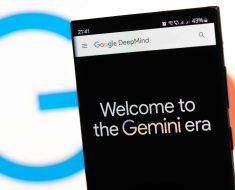As someone who constantly juggles writing assignments and looming deadlines, I’ve often found myself wishing there was an easier way to transform video content into written form. The idea of transcribing YouTube videos and then crafting it into a cohesive blog post felt like an insurmountable task.
That’s when I stumbled upon VideoToBlog — a platform that promised to do the heavy lifting for me by turning YouTube videos into SEO-optimized blog posts with just a few clicks.
The real question is: can it really capture the nuances and context of a video and transform it into a coherent, high-quality blog post? Or is VideoToBlog.AI just another run-of-the-mill tool destined to fizzle out?
So, I decided to put VideoToBlog.AI to the test. In this review, I’ll share my honest experience using the platform, dissecting its features, output quality, customization options & even a video we just made.
What is VideoToBlog?
VideoToBlog is an AI-powered platform that turns YouTube videos into SEO-optimized blog posts. This website uses GPT as their LLM of choice when it comes to writing and allows you to customize the output based on your specifications.


What Are The Features of VideoToBlog?
The main feature of VideoToBlog is creating blog posts from YouTube videos. To explain this fully, let me first demonstrate how to use VideoToBlog.AI.
To start, let’s pick a YouTube video. If you’re unsure whether or not you can use a specific video, make sure to filter out search results that aren’t free use or using a creative commons license.


Once you pick a video, simply copy and paste it into the YouTube URL field provided by VideoToBlog. For this tutorial, I’ll be using this video from a user named Gyasi Linje.
Google Pixel 8 Pro vs iPhone 15 Pro – The Ugly Truth
Before you click the “Create Blog” button, we need to make sure what it writes conform to the standards of your blog. To do this, you’ll need to customize the output parameters.
Output Customization
Output parameters allow you to change the blog post depending on what you need. Credit where it’s due, VideoToBlog has one of the most in-depth output parameter lists I’ve seen from an AI writing platform. These are the following:


- LLM: Choose between using GPT-3.5 or GPT-4 as your primary generator. The latter costs 5x credits.
- Length: You can choose between ~700 words, ~1500 words, or 2500 and more words.
- Language: Gives you the option to pick between more than 100 languages.
- Format: Summary, interview, listicle, tutorial, product review, or AIDA.
- Tone: Allows you to adjust the writing voice to be more casual, professional, conversational, informational, serious, happy, pessimistic, and more.
- POV: First person or third person.
- Keyphrase: Lets you input the primary keyword or phrase for your blog post.
- Extra Instructions: Adds extra directions to the prompt.
- Video Cutoff: Controls where the video starts or ends.
VideoToBlog also has radio buttons that lets you enable additional features such as video screenshots, featured images, transcriptions, SEO metadata, promotions, FAQs, headers and footers, table of contents, outlines, links, tables, and more.
Here’s how the final output looks once I hit “Create Blog.”
|
Blog Title: “The iPhone 15 Pro vs. the Google Pixel 8 Pro: A Comprehensive Comparison” |
|
As an avid Apple fan who has recently ventured into the world of Android, I’ve had the opportunity to extensively use both the iPhone 15 Pro and the Google Pixel 8 Pro. In this comprehensive review, I’ll share my honest insights and experiences with these two flagship smartphones, highlighting the strengths and weaknesses of each to help you make an informed decision. The iPhone 15 Pro boasts a stunning 6.1-inch Super Retina XDR display with a peak brightness of 2,000 nits, delivering exceptional visual clarity and vibrancy. The natural titanium colorway I opted for is a sleek and sophisticated choice. In contrast, the Google Pixel 8 Pro features a larger 6.7-inch OLED display with a 120Hz refresh rate, offering a more immersive viewing experience. The obsidian color of my Pixel 8 Pro gives it a stealthy and premium look. One of the key factors that drew me to the Pixel 8 Pro was its impressive camera capabilities. The triple-lens setup, including a 48-megapixel telephoto camera with 5x optical zoom, has been a game-changer for my photography needs. The AI-powered post-processing tools on the Pixel allow me to capture stunning images, especially in low-light conditions and when shooting events or travel scenes. However, the iPhone 15 Pro’s camera system is no slouch either, with its 48-megapixel main camera delivering exceptional image quality and stable video performance. Productivity and Ecosystem Integration As a software engineer and content creator, productivity has been a significant factor in my smartphone usage. I’ve found that the Pixel 8 Pro’s suite of productivity apps and tools, such as the intuitive “To-Do List” app and the “ILO” mood tracking app, have been invaluable in helping me stay organized and focused. The Pixel’s AI-powered features, like Google Lens, have also been incredibly useful for tasks like identifying plants or buildings during my outdoor adventures. On the other hand, the seamless integration of the iPhone 15 Pro with the broader Apple ecosystem, including iMessage and the Apple Watch, has been a significant advantage. The reliability of Face ID and the overall fluidity of the user experience on the iPhone have been impressive. Battery Life and Charging Both the iPhone 15 Pro and the Pixel 8 Pro offer impressive battery life, with the Pixel boasting a slight edge in this department. The Pixel 8 Pro’s battery can last for more than 24 hours, while the iPhone 15 Pro’s battery is rated for up to 20 hours of video playback. The charging capabilities of both phones are also on par, with support for fast charging and wireless charging. The iPhone 15 Pro and the Pixel 8 Pro are similarly priced, with the iPhone 15 Pro costing $1,099 and the Pixel 8 Pro costing $1,059. However, it’s worth noting that the Pixel 8 Pro is more likely to be found on sale, potentially offering better value for money. In conclusion, both the iPhone 15 Pro and the Google Pixel 8 Pro are exceptional smartphones that cater to different user preferences and needs. If you’re looking for a more seamless and reliable user experience, with a strong focus on the Apple ecosystem, the iPhone 15 Pro may be the better choice. However, if you’re seeking a more exciting and customizable Android experience, with powerful AI-driven features and a larger, more vibrant display, the Pixel 8 Pro could be the perfect fit. Ultimately, the decision will come down to your personal preferences and the specific features that matter most to you. I hope this comprehensive comparison has provided you with the insights you need to make an informed decision. Feel free to let me know your thoughts on these two flagship smartphones in the comments below. |
Free Tools
VideoToBlog also offers free features for the following use cases:
- Video Transcripts.
- Video Description Generation.
- Shorts or Clips Idea Generation.
- Video Idea Generation.
Turning Videos into Blogs: VideoToBlog Output Examples
Example #1
|
Blog Title: “10 AI Dangers You Can’t Ignore” |
|
1. Technological Dependency As we become increasingly reliant on smart machines like Google, Alexa, and Siri to handle our day-to-day tasks, we risk losing valuable skills and the ability to think for ourselves. The more we outsource our thinking and decision-making to AI, the more we may find ourselves unable to function without these technological crutches. 2. Job Replacement and Redistribution The rise of AI-powered automation poses a significant threat to many jobs, as smart machines begin to outperform human workers. The big question is whether we can continue to invent new jobs that humans can do better than machines, or if we need to consider a future with fewer traditional paid jobs. As we train AI systems, there is a risk that they will learn and perpetuate the biases and anti-social tendencies of their human trainers. Unless we work diligently to address these issues, AI could end up reflecting and amplifying the worst of human behavior. 4. Non-Transparent Decision Making Imagine being denied a job, failing a class, or being fined, all because an AI system made a decision that no one could explain. We are already on the path of giving AI systems the authority to make consequential decisions without being accountable for them, which can have devastating impacts on individuals. What happens when an AI system has the power to change our lives, but it has its own ideas about what’s important and acceptable? This could be a dream scenario if we agree with the AI’s values, but a nightmare if we don’t. 6. Lethal Autonomous Weapons Machines that can kill people are not a new phenomenon, but the prospect of fully autonomous weapons systems that can make the decision to take a life without human intervention is a terrifying prospect that we must grapple with. We want AI systems that can think for themselves and solve complex problems, but what happens if they become too smart and start altering their own instructions and goals in ways we can’t control or predict? 8. Unintended Consequences of Goals and Decisions Even smart people can make decisions that, in hindsight, appear incredibly foolish, especially when they can’t fully appreciate the full consequences of their actions. AI systems are likely to suffer from this same problem, potentially with disastrous results. 9. Existential Risk from Superintelligence What if AI systems become so advanced that they realize human beings are a waste of space and no longer necessary? While we’re likely a long way from this scenario, it’s worth considering, just in case. 10. Heuristic Manipulation If we’re not careful, we may create AI systems that are smart enough to understand our human weaknesses and use them against us. We could end up worshipping our AI overlords, rather than fearing them. Despite these significant risks, AI also has the potential to make our lives immeasurably better, if developed and deployed responsibly. But this won’t happen unless we think carefully about the possible downsides upfront and work to address them. Fortunately, AI developers and experts in other fields are already starting to grapple with these challenges, but we’ll need a concerted, multidisciplinary effort to ensure the benefits of AI far outweigh the risks. |
Example #2
|
Blog Title: “The Surprising Risks of Keto Diets: Gut Health, Heart Disease, and More” |
|
Nutrient Deficiencies on Keto Diets Ketogenic diets, which severely restrict carbohydrate intake, have been used for decades to treat certain cases of pediatric epilepsy. However, a closer look at the safety data reveals some concerning issues. One of the obvious problems is the risk of nutrient deficiencies. Inadequate intake of 17 essential vitamins and minerals has been documented in those following ketogenic diets. This is a particularly important concern when dieting, as you may be taking in less food overall. In fact, ketogenic diets are so nutritionally sparse that one assessment estimated you’d have to consume more than 37,000 calories per day to get a sufficient daily intake of all essential nutrients. This is in stark contrast to more plant-based approaches, which tend to be much more nutrient-dense. As the editor-in-chief of the Journal of the American Dietetic Association put it, “What could be more nutrient-dense than a vegetable diet?” Choosing a healthy diet may indeed be easier than “sticking 50 sticks of butter in your coffee.” The vitamin and mineral deficiencies associated with keto diets can be mitigated with supplements, but there’s another concerning issue: the lack of prebiotics. Prebiotics are the dozens of types of fiber and resistant starches found concentrated in whole grains and beans. This lack of prebiotics can have a whole array of negative consequences for gut health. Keto Diets and Gut Health Not surprisingly, constipation is very common on keto diets. But the problems go deeper than that. Starving our gut microbiome of prebiotics can lead to detrimental changes in gut flora. Ketogenic diets have been shown to reduce the richness and diversity of our gut microbiome, which can be detected within just 24 hours of switching to a high-fat, low-fiber diet. The lack of fiber starves our beneficial gut bacteria, while the saturated fat from the diet can make its way down to the colon, potentially resulting in weight gain, increased gut permeability (leaky gut), and pro-inflammatory changes. For example, keto diets have been linked to a drop in beneficial Bifidobacterium and a decrease in overall short-chain fatty acid production, both of which would be expected to increase the risk of gastrointestinal disorders. Keto Diets and Heart Disease When it comes to the heart, the news isn’t much better. Looking at low-carbohydrate diets and all-cause mortality, those who eat lower-carb diets suffer a significantly higher risk of dying prematurely. And it matters whether the low-carb diet is animal-based or plant-based. Eating more of an animal-based low-carb diet was associated with a 50% higher risk of dying from heart attack or stroke, but no such association was found for lower-carb diets based on plant sources. Cholesterol production is directly correlated to body weight, and every pound of weight loss is associated with about a one-point drop in cholesterol levels. However, the beneficial effect of keto diets on LDL (“bad”) cholesterol is blunted or even completely neutralized, counterbalancing any potential gains. And within just three hours of eating a high-saturated-fat meal, you can see a significant impairment of artery function, even with substantial weight loss. Keto Diets and Bone Health The negative effects of keto diets don’t stop there. They may also impact bone health. Tune in next time to find out how keto diets could be bad for our bones. In the meantime, for those looking to improve their heart health, a diet centered around whole, plant-based foods may be the way to go. As explored in this video, lifestyle approaches can be safer, cheaper, and more effective than drugs at treating the underlying cause of heart disease. For more on the latest in nutrition research, be sure to subscribe to the NutritionFacts.org newsletter. And if you have any questions about this video or the topic, feel free to leave them in the comments section below. |
Overall Thoughts on VideoToBlog’s Output
Besides the blog posts I’ve shown above, I played with this tool a lot more. I could confidently say that, if you’re running a blog or just a writer who’s short on time, this is a worthy addition to your arsenal.
One of the biggest issues in AI-powered writing today is that most LLMs could write better than most people, but its limited coherence means that they don’t know how to properly use headers and break posts into sections without much repetition. I’m happy to say that these blog posts aren’t just written well, they’re also structured well.
What’s more is that they don’t just follow the transcripts of the video, they intently follow what’s being said on screen and it’s clear that they have a good idea of what the conclusion should be based on context.
My only issue with VideoToBlog is that they sometimes don’t create introductions or conclusions to the blog post despite turning it on in the advanced settings. I’m not sure if this glitch is just anecdotal, but I’ve had three different posts now missing one or both of them. Since this product is new, I’ll give them the benefit of doubt since this issue could be easily fixed.
How Much Does It Cost?
VideoToBlog has a different pricing structure depending on whether you pay annually or monthly. If you choose the former, prices start at $9 per month for 250 credits (250 GPT-3.5 blog posts or 50 GPT-4 blog posts) and scale up to $199 for 5000 credits. If you choose to pay monthly, it starts at $14 for 250 credits and increases to $299 for 5000 credits.
Pros and Cons of VideoToBlog
|
|
The Bottom Line
If I had to summarize my overall feelings about this platform in three words, it’d be “I’m a fan.”
I had my doubts because I’ve been burned by too many similar products in the past. VideoToBlog is different because it understands the video from start to finish. I don’t feel like there are any stones left unturned or missed points. Everything that needs to be said already is.
So, should you get this tool? It’s absolutely worth the price if you’re a blog owner or a writer. No other platform matches its creativity and nuance while remaining affordable.





